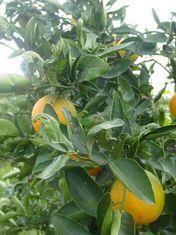
Production of citrus in Spain’s Valencia region could be cut by almost half in two years.
Grower leaders are warning that a disastrous lack of profitability could see output plummet by 40 per cent, as producers would be forced to leave the sector in droves.
Ava-Asaja president Cristóbal Aguado said that returns on most varieties are not even managing to cover costs.
According to the organisation’s figures collected from its members, only producers of some early-season easy peelers and some late-season easy-peel varieties are likely to make a profit this year, having achieved prices above production costs.
Output has been below forecast too, according to Ava-Asaja, as small sizes meant that 20-30 per cent of mandarins and oranges were left on the trees or graded out at packhouses.
Aguado said: “At the end of November last year, we were already sounding the alarm and we even tried to call a halt to citrus activity. Before 2008 was out, we had lost more than €134 million (£114m) and in March that had risen to €239m. Grower returns have now confirmed our worst fears: the sector has crossed the limit of losses that can be absorbed and in two years we could lose up to 40 per cent of the area under citrus production in Valencia.”
Further evidence of the lack of liquidity affecting the sector is the lack of uptake of insurance, with subscriptions to policies down by 30 per cent on this time last year.
Meanwhile, the picture is no brighter in south-western Spain. Growers in Huelva in the region of Andalusia have been diversifying into citrus over the past 10 years as an alternative to field crops, but now their leaders are urging diversification away from citrus into other lines as citrus consumption slides.
Francisco Contreras of growers’ organisation Feaca-Huelva estimates that 20-40 per cent of growers will abandon their citrus production over the next few years. He said: “Now is not the time to be increasing plantings, especially taking into account the changing eating habits of the population and declining citrus consumption.”



